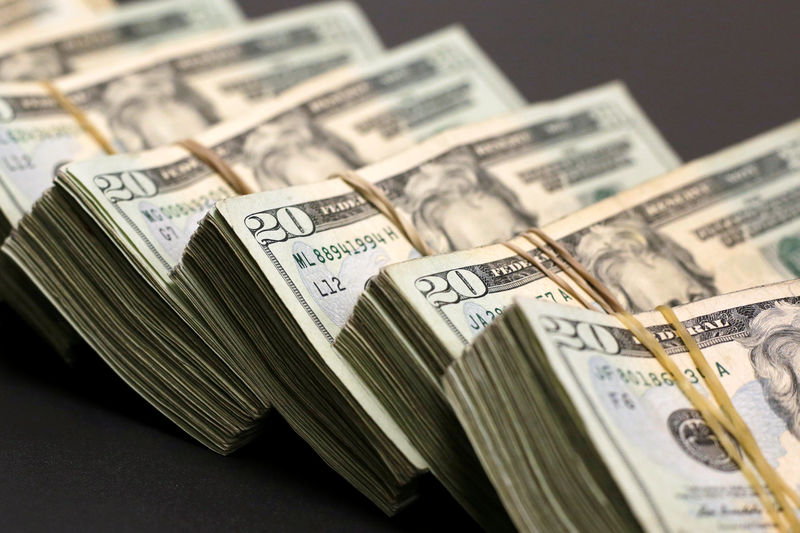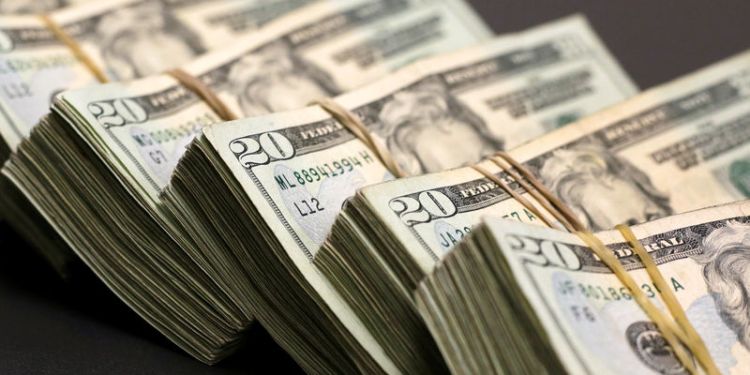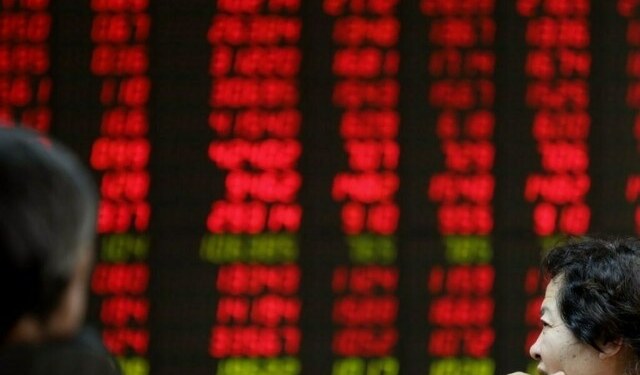 © Reuters. Bundles of banknotes of U.S. Dollar are pictured at a currency exchange shop in Ciudad Juarez
© Reuters. Bundles of banknotes of U.S. Dollar are pictured at a currency exchange shop in Ciudad JuarezBy Jemima Kelly
LONDON (Reuters) – The dollar labored near a three-year low against a basket of currencies on Friday, heading for a fifth week of falls that would be its longest losing streak since May 2015, as worries about a possible U.S. government shutdown weighed.
The U.S. currency slipped to its lowest since December 2014 this week, with investors selling it on the view that other central banks will join the Federal Reserve in raising interest rates, after years of ultra-loose policy adopted to combat the 2008 global financial crisis and subsequent recessions.
It was slightly off Thursday’s lows on Friday but was nevertheless down 0.1 percent on the day against its basket of six major rivals ().
The U.S. House of Representatives passed a bill on Thursday to fund government operations through to Feb. 16 and avoid agency shutdowns this weekend when existing allocations expire. The bill has yet to be approved by the Senate, where it faces an uncertain future. [nW1N1OJ02A]
“(This) is not having a major impact… because we have had lots of threats of shutdown in our lives and (this) would need to turn into something much more significant to have a big impact,” said Kit Juckes, Societe Generale’s chief macro strategist in London.
The prospect of Senate approval has been complicated by President Donald Trump saying that an extension of funding for the children’s health insurance program, a Democratic priority, should not be included. [nL1N1PD0EC]
The euro
The dollar slipped by 0.4 percent to 110.60 yen
A tiny reduction in the Bank of Japan’s bond buying this month was enough to spark speculation about possible modification of policy, even though many market players think any move will be many months away. [nL3N1PC1DT]
“Markets are increasingly sensitive to the prospect of a less-dovish BOJ, which is putting pressure on dollar/yen,” analysts at UBS Wealth Management said in a note. They added that they will be looking to the BOJ’s policy meeting next week to gain more clarity on the central bank’s stance.
“For now, we do not think the BOJ has any urgency to shift its yield curve control regime,” they added.
Another underlying factor behind the dollar’s weakness has been global investors, including sovereign wealth funds and central banks, diversifying their holdings by switching more funds into other currencies.
Fusion Media or anyone involved with Fusion Media will not accept any liability for loss or damage as a result of reliance on the information including data, quotes, charts and buy/sell signals contained within this website. Please be fully informed regarding the risks and costs associated with trading the financial markets, it is one of the riskiest investment forms possible.
Source: Investing.com



























